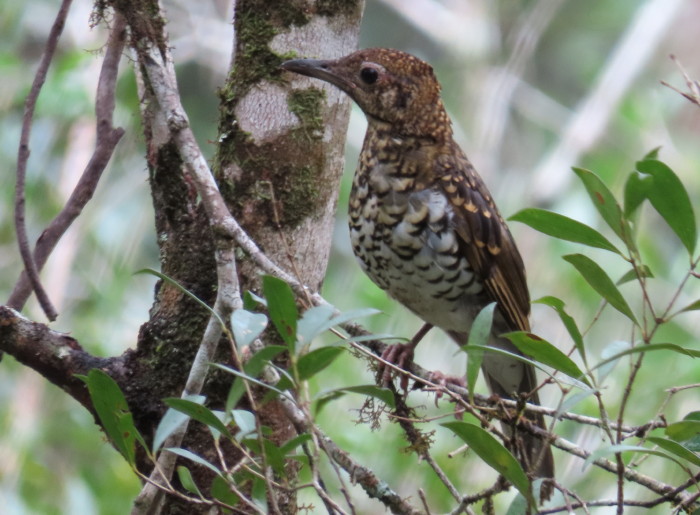
Zero is back! A few days ago, a juvenile cassowary walked up from the creek towards our house, behaving as if it was familiar with its surrounds (and us). As it doesn’t have any wattles, we are sure that it is Zero, Dad’s chick from early 2021. Having put on quite some weight, wearing a short skirt and having BIG feet, makes us assume that Zero is a female.
After they are being chased away by their father at around 9 months of age, young cassowaries have to avoid encounters with adult birds and find their own territory.
We rarely see any cassowaries at that stage. Juveniles/ sub-adults passing through have always been about 2 years old, mostly with black feathers, except for some brown ones around the tail, blue and red colours developing on the neck and with a small casque.
Zero was a very lucky bird, being together with Dad for more than a year.
She was about 2 months old when Dad first came by with her in early May 2021.

June 2021: young cassowaries have blue eyes:

The stripes are fading, August 2021:

October 2021:


January 2022: a big chick!

Starting to go blue in the face, February 2022:

May 2022: more colour developing down the neck:

August 2022: (2 images by Lorraine Harris)

The casque is starting to grow.

When she was about 1 1/2 years old, she disappeared, showing up once on our wildlife camera in January 2023.

June 2023: Now almost 2 1/2 years old, she has returned.

Image by Marcus Odgaard:


Lemon Aspen trees in the rainforest seem to be the attraction: their fruits are prominent in the cassowaries’ droppings.



































